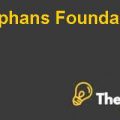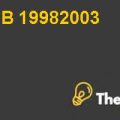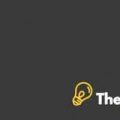INTRODUCTION:
Stryker Corporation as incorporated in 1946 in Kalamazoo, Michigan, USA. The founder of the Stryker Corporation is Dr. Homer Stryker. The company deals in the medical and surgical products and is a leading provider of these Specialty products. The founder “Dr. Homer Stryker” made the company public through an IPO in 1979 and is currently registered in two stock exchanges “NYSE” and “S & P 500”.
The company operates four divisions in Michigan, Puerto Rico, and Ireland. The four divisions of the Stryker Corporation include “Orthopaedic Implants, Medical and Surgical Equipment (MedSurg), Rehabilitative Medical Services, and International Sales. The company recorded global revenues of approximately $430 million in 2002. Stryker Endoscopy produced video imaging and communications equipment and instruments for arthroscopic and general surgery. Stryker Medical produced hospital beds and other patient handling equipment along with the emergency handling equipment. Printed Circuit Board(PCB)isitmain instrument which is used in all of its products and platforms.
PROBLEM STATEMENT:
The company reported revenues and operating profit in 2002 of $3 billion and $507 million. In 2003, the management of Stryker Corporation is considering a change in its strategy for the sourcing of their Print Circuit Board (PCB) instrument. Currently, the company is sourcing this instrument from small suppliers on the contract basis.
The performance of some contract suppliers is not at adequate level regarding the quality, delivery and responsiveness. These issues are creating problems for the company due to which the company is consistently looking for an alternative sources to cover up this problem. The management of the company has studied three options for resolving this problem. From these three options, the management has decided to put more emphasize on the third option.
Now the main problem is that the third option, which is “In-house manufacturing of PCBs” requires substantial investment up to $10 million and the company wants to assure that through analysis whether this option is suitable or not.
ANALYSIS:
Quantitative:
Stryker Corporation has considered three options for the covering up the problem discussed in the problem statement. From these three options, two of them do not require any financial analysis. Therefore, they are discussed in the quantitative analysis.
The third option that is In house manufacturing of PCBs has been put under consideration. For this analysis, the NPV, IRR and Payback period are calculated in order to identify whether the return earned from this investment is valuable or not. The first step before the calculation of the above stated terms is to calculate the total cost of investment that will be incurred in the calculation of the NPV.
Stryker Corporation has estimated the budget of spending around $10 million. The expected cost of investment for the above proposed project includes construction of the new building with 30,000 square feet of space on eight acres costing $3,030,000, 70 separate categories of equipment, which are shown as capital equipment costing $2,643,258, and communication & IT infrastructure equipment costing additional $210,000. The total sum of $5,883,258 as the cost of investment has been taken in the project.
Moreover, the amount of net saving before tax has been calculated as shown in the EXHIBIT (excel file). In order to arrive at this final amount, several steps have been followed; from the given case, we have taken annual data from the Exhibit no. 2 which is named as “Selected Cost Projection under Different Sourcing Policies. The annual amounts of the projected PCB Purchases under current sourcing, which is the outsourcing policy, are the usage of the funds taken as an expense against the expenses under the new proposal, which is the “In-sourcing of PCB” The difference between these two is the amount of decrease in the purchases from the contract manufacturers is taken as an annual savings.
Following this calculation, the amount of the cost of manufacturing has also been taken from the Exhibit 2. Regarding this point, Stryker Corporation’s management has stated that the sum cost has already been incurred before the manufacturing of the PCBs. Therefore the cost is considered to be the sunk cost and has been totally eliminated from the NPV analysis. The manufacturing of PCBs will be started from the year 2016 (end of year 2015). The cost of the manufacturing is calculated by taking the sum of material, variable cost and fixed cost and it is assumed that the company has taken a full cost method to derive their cost of sales..........................
This is just a sample partial case solution. Please place the order on the website to order your own originally done case solution.













